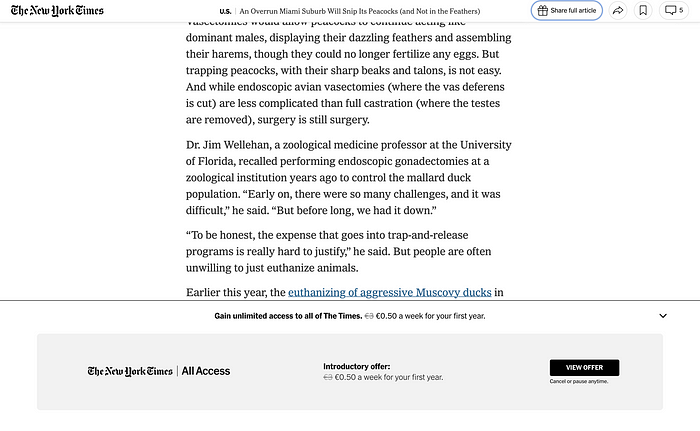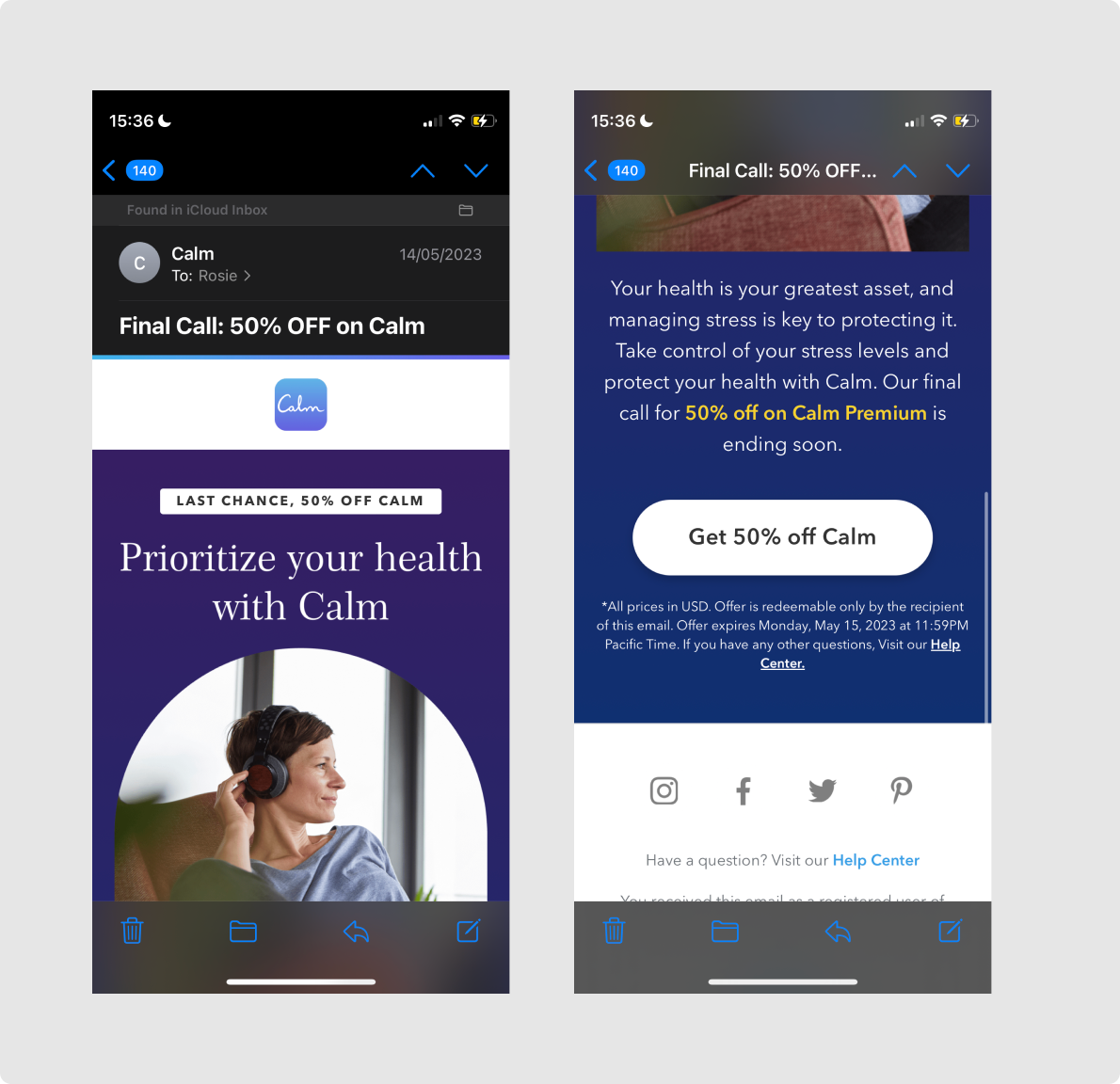

Can growth design be truly ethical?
source link: https://uxdesign.cc/can-growth-design-be-truly-ethical-a37b0f0fd47d
Go to the source link to view the article. You can view the picture content, updated content and better typesetting reading experience. If the link is broken, please click the button below to view the snapshot at that time.

Can growth design be truly ethical?
And if so, how?

In the ideal world, growth designers create user experiences that drive business growth while following ethical principles. However, creating and maintaining this balance between growth and ethics was one of my biggest challenges as a growth designer.
Shaping ethical solutions
Growth hacks or so-called psychology tricks have a negative reputation. and it’s not a surprise. Think about the last time you stumbled upon such a “smart” hack — maybe when you were trying to unsubscribe from newsletters you didn’t mean to sign up for, or when booking a low-cost flight became complicated due to numerous upsells.
The more marketers and people responsible for company growth learn about growth hacks, the more unpleasant some user journeys seem to become.
Some growth design projects by nature limit user’s access to some functionality. While the natural desire of most designers is to give the most to the users and ensure their best experience, such projects often link back to making money for the company and achieving business goals.
For example, monetization projects may include limiting free access to some functionalities, and keeping the rest under the paywall; or introducing more points of entry to the paid features to promote them more.
Engagement and retention growth projects can include creating obstacles to cancel subscriptions or opt out of emails, and excessive emailing to bring users back to the product.
Imagine you’re working on a growth design project that involves limiting free access to certain features. How might you ensure users understand the value of the paid features while still respecting their experience as unpaid users?
Growth design projects can and should be ethical as well, and this can be achieved if these promotions are clear, respectful, and provide genuine value to users. Let’s look at some of these which managed to find a balance between business and providing value to the world.
Making job search and networking accessible
Take LinkedIn as an example of ethical growth design. They offer premium subscriptions that give users access to enhanced networking features, insights, and professional development courses. It illustrates how a product can provide extra services to users who require them, while still keeping core functions accessible to all users.
Imagine you’re working on a growth design project that involves limiting free access to certain features. How might you ensure users feel the value of the paid features while still respecting their experience?
Growth design projects can and should be ethical as well, and this can be achieved if these promotions are clear, respectful, and provide genuine value to users. Let’s look at some of these which managed to find a balance between business and providing value to the world.

Journalism and free access to information
The New York Times has a subscription model that gives users free access to a limited number of articles each month and requires a subscription for full access. This approach supports quality journalism by ensuring a revenue stream, at the same time still permits users to engage with a some amount of content for free.

Language learning with upgrades
Duolingo’s core language courses are available for free, and users can access additional features and content through upgrades. This way all users can learn a language without financial barriers but those who are interested in extra such as pronunciation exercises or no ads can buy the Premium version.

So shaping valuable ethical design solutions in growth user experience projects is definitely possible. There is one caveat, however. It’s possible as long as the team is aligned and is also willing to follow principles of ethical design.
And this leads us to the next point…
Right team culture
When working in product design, we often have to juggle between the requests from the stakeholders in the company and user needs and preferences. When working in growth design, we have to advocate for users, keep in mind requests from all stakeholders and also make sure the project solution is well aligned with the company goals and the experiment plan is well designed.
While product design projects by nature are aimed at improving user experience, adding new functionality, or introducing innovations, growth design projects often aim to impact specific metrics the company deemed essential for this period.
So, how can you prevent compromising the user experience while also contributing to the business goals?
Ethical by design
Some companies have a design culture that promotes making ethical design decisions more than others. We all know about Patagonia which is committed to responsible consumption, uses recycled materials, promotes fair labor practices, and encourages customers to repair and recycle their clothing.
You can often tell if a company cares about ethical design by judging its user interface, but sometimes you will need to dig deeper and understand how decisions are made.
For example, Twitter (or now X) employee have flagged that:
…revenue-enhancing methods (such as increased personalization) would lead to ideological filter bubbles, open up methods of algorithmic bot manipulation, or inadvertently popularize misinformation.
Ask a team during job interviews about how they are making decisions at the moment, what criteria they are considering, and if they employ ethical design principles.
Communicating your ethical design decisions
If you were lucky enough and joined a company that leans towards the “ethical design” spectrum you might have the opportunity to present and advocate for your ethical solutions, and your voice will be heard.
I have adapted the framework developed by The Markkula Center for Applied Ethics at Santa Clara and further I will explain how I usually present my design solutions.
1. Who will be affected? How?
Describe the audience that will be harmed in case the solution that is less ethical is dwelled on. Add actual portraits of the people, these can be screenshots from the interview sessions or usability studies. If applicable, share the user testing videos or at least clips from these sessions with emotional insights.
2. What are other alternatives?
Be actionable — venting about unethical designs and issues will not help finish the project effectively. Brainstorm alternative designs you feel may work better.
3. Which option treats all parties fairly and with respect?
Respect covers various aspects, such as valuing users’ time and resources, considering their mental health, and acknowledging their unique characteristics.
Consider assessing mental load, clarity of the policies and extra fees, data privacy, and accessibility.
4. Which option will yield the most good and the least harm?
Do the hard work for the stakeholders, prepare the designs, and list the pros and cons of each of them. Highlight the one that you think will be optimal for business and ethical for the community. Decisions should be logical, well-described, and easy to approve.
5. Can I test this solution before rolling it out for 100% of the audience?
Some technical solutions are impossible to test using just a design prototype, for example, because they involve algorithms (e.g. personalized feed or suggestions). Yet to minimize the possible harm, you can collect and analyze feedback from a small number of users first and this may help you prevent causing harm to a bigger number of users.
6. Would I be proud to share my decision-making process with the public?
At the end of the day, your contribution to both ethical and unethical design projects will leave a mark on the world. Keep this in mind, and consider your decisions from a long-term perspective.
Jaycee Day shared her experience of advocating for a more transparent design solution during Config 2023.
Jaycee Day talkGoing beyond the screens and flows
A mature designer or design manager has to carefully evaluate both the ethical aspects and benefits of the solution for the company and find a balance. Successful designers meet the business department in the middle and understand their needs to deliver the optimal product and drive company growth.
Steve Johnson — VP of Design at Netflix once have said:
Steve Jobs was a designer and a business person combined. He used design to help run his business. He used simplicity, beauty, ease of use, empathy and reducing complexity as a competitive advantage against Microsoft, Dell, etc.
Some short-term growth strategies may lead to undesirable long-term effects which could end up being more costly for the company in the long run.
Consider Uber’s case: Uber’s drive to attract drivers by offering big sign-up bonuses and incentives resulted in an influx of drivers. However, this strategy also led to an excess of drivers in specific areas and ultimately, discontent and violence among drivers. The focus on short-term gains impacted the company’s long-term relationship with both drivers in certain markets.
However, other solutions which seem unethical at first glance, allow us to democratize access to some benefits. Would accessible flights or free quality publications exist without a balance between ethics and business needs? The boundary between ethical and not can be thin and even subjective and only the creators — designers including decide where is optimum.
What would become of the products if we only used our ethical principles as a North Star and ignored the business needs?
Solutions that seem great only from a design standpoint might not align with the company’s interests. Design maturity involves understanding certain necessary compromises.
Great resources about Growth:
3. https://www.reforge.com/blog
4. https://uxdesign.cc/from-ux-to-growth-design-5-principles-to-multiply-your-value-81278d4d3735
Good luck advocating for a user and creating ethical designs!
Recommend
About Joyk
Aggregate valuable and interesting links.
Joyk means Joy of geeK



